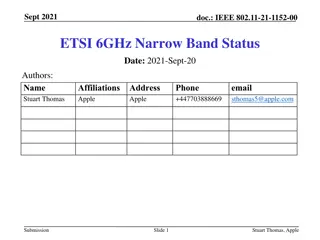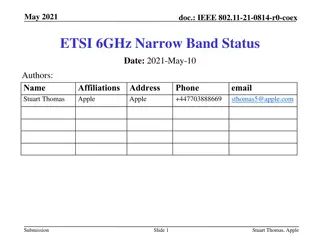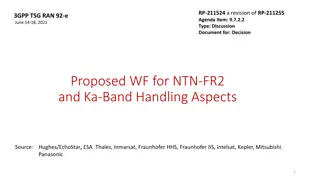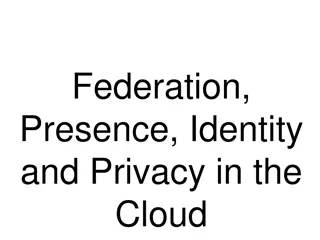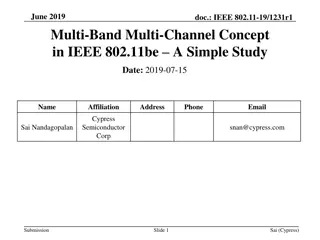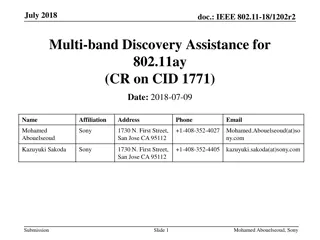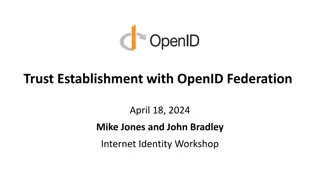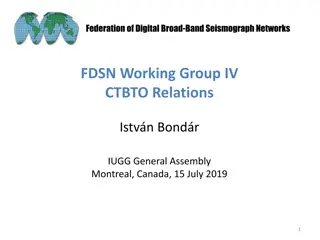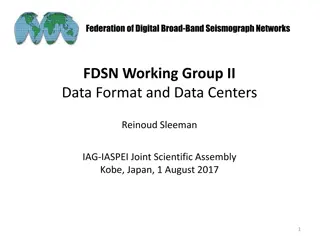Federation of Digital Broad-Band Seismograph Networks (FDSN) Overview
FDSN, founded in 1985, coordinates digital broad-band seismic networks globally to enhance seismic monitoring and research. It promotes site selection, data exchange, and instrument standardization, facilitating the installation of seismic stations across various scales to support earthquake studies. Despite being a unique organization without inter-governmental status or a budget, FDSN operates through member institutions' support. With 85 member institutions in 64 countries, FDSN plays a crucial role in sustainable seismic network development and maintenance.
Download Presentation

Please find below an Image/Link to download the presentation.
The content on the website is provided AS IS for your information and personal use only. It may not be sold, licensed, or shared on other websites without obtaining consent from the author.If you encounter any issues during the download, it is possible that the publisher has removed the file from their server.
You are allowed to download the files provided on this website for personal or commercial use, subject to the condition that they are used lawfully. All files are the property of their respective owners.
The content on the website is provided AS IS for your information and personal use only. It may not be sold, licensed, or shared on other websites without obtaining consent from the author.
E N D
Presentation Transcript
Federation of Digital Broad-Band Seismograph Networks The FDSN and Sustainable Seismic Networks
Federation of Digital Broad-Band Seismograph Networks The FDSN: Origins Founded in 1985 to bring together digital broad- band seismic networks Support national institutions and seismic networks moving into the broad-band seismic technology Coordinate the location of new seismic stations to avoid duplications and promote global distribution FDSN has commission status within IASPEI (International Association of Seismology and Physics of the Earth Interior)
Federation of Digital Broad-Band Seismograph Networks The FDSN: Goals Coordinates site selection, data exchange and instrument standardization Promotes the installation of seismic stations. There are about 2000 broad band sites now; 200 in real time (backbone stations) Promote a variable network geometry approach: local, regional, national, worldwide scales Promotes the deployment of ocean bottom seismometers
Federation of Digital Broad-Band Seismograph Networks The FDSN: A Unique Organization FDSN does not have inter-governmental status Has no budget No permanent staff Operated by support offered by member institutions
FDSN Membership in 2011 85 institutions in 64 countries Jamaica Japan (ERI & NEID) Kazakhstan Macedonia Malaysia Mexico Netherlands New Zealand Nicaragua Norway Poland Portugal (CGUL & IST) Romania Russia Slovakia Slovenia South Africa Spain Sweden Switzerland Taiwan Tajikistan Thailand United Arab Emirates United Kingdom USA (IRIS, NCSN, PRSN, SCSN & USGS) Uzbekistan http://www.fdsn.org/forms/membership_form.htm
Federation of Digital Broad-Band Seismograph Networks Data Distribution Performance Goals
Federation of Digital Broad-Band Seismograph Networks The FDSN Challenges: Encourage and support the development and Implementation of tools for societal benefit: Early damage assessment Tsunami and earthquake warning efforts Shake maps Long-term scientific research Source Characterization
Federation of Digital Broad-Band Seismograph Networks Future Challenges for the FDSN Community: Maintain the current infrastructure Diversify the offer of products and services Improve the coverage of broad band stations Enlarge the number of FDSN members and broad band stations transmitting real time Improve coverage by offering societal advantages Increase the number of broad band stations
Federation of Digital Broad-Band Seismograph Networks THANK YOU!








